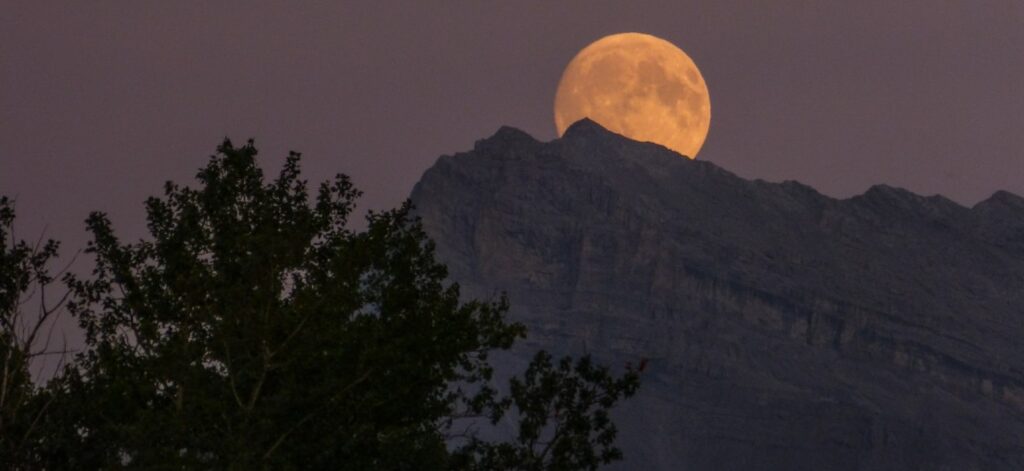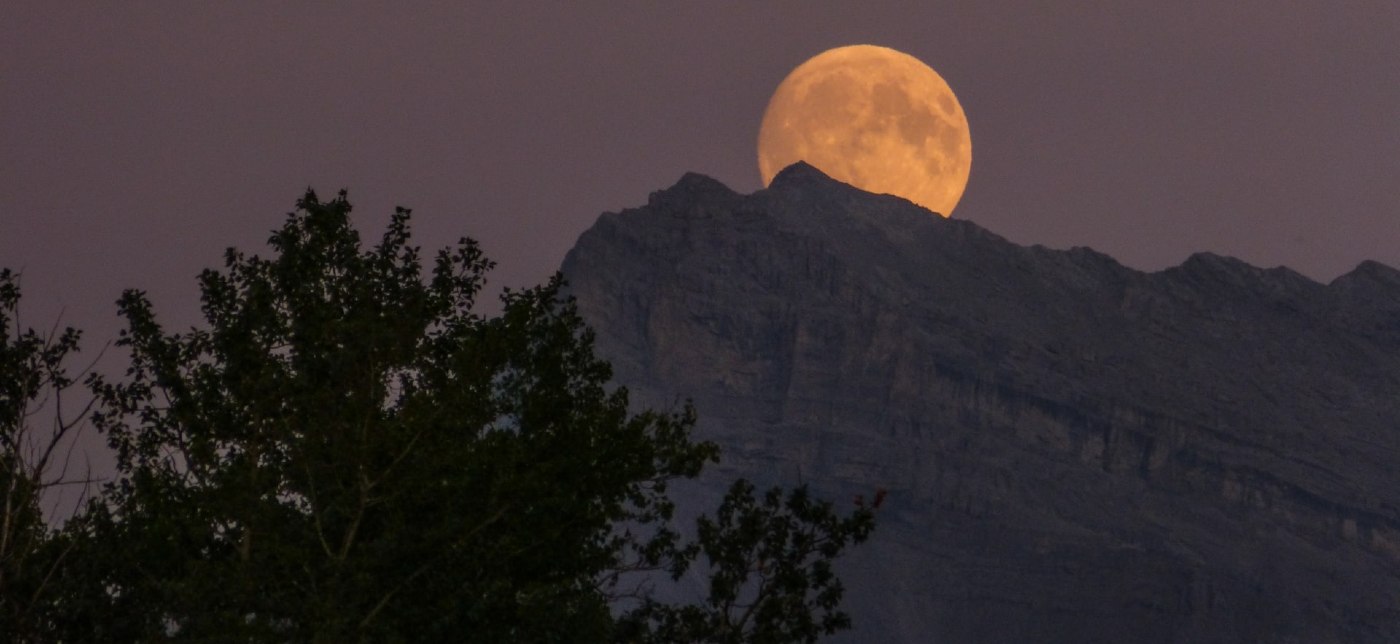Thursday night, look up at the sky just as the sun begins to set—and you’ll see the Moon glowing orange as it rises above the eastern horizon.
As January’s full Moon continues to rise on Thursday evening, that tangerine glow will fade to yellow, then to a white so bright it’ll hurt to look at with the naked eye.
While in 2020 there were 13 full Moons, this year there’ll be 12 in total: including three supermoons—the Full Pink Moon in April, the Full Flower Moon in May, and the Full Strawberry Moon in June.
The Full Flower Moon will actually be a “Total Super Blood Flower Moon Eclipse.” That means, on May 26, if you’re on the west coast you should see the lunar surface turn a deep crimson for around 15 minutes.
January’s Wolf Moon—a name thought to originate among the Algonquin people—isn’t known as such to all cultures. According to NASA, around the world it’s also known as Candles Moon, Thaipusam festival Moon, the Ananda Pagoda Festival Moon, Duruthu Poya, and the Full Moon of Tu B’Shevat.
To new beginnings

To many, a full Moon can be seen as a chance to start afresh—to look back on our choices and make out on a new path.
SEE: Stunning Winners of the Northern Lights Photographer of the Year Competition
If you miss out on seeing the full Moon on Thursday itself? Not to worry. The Moon will actually appear to be full for about three days, from Wednesday morning through early Saturday morning.
(WATCH the Farmer’s Almanac video below to learn more about the Wolf Moon.)
HOWL the News of January’s Wolf Moon Over to Your Friends…




















